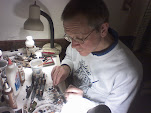Ross left the choice of scenario to me, and, having nothing particular in mind and wanting to see how AGW handled the use of our usual scenario library, I dug into C.S. Grant’s class Scenarios for Wargames. I resolved to set up the first one that I came to that a) I hadn’t tried before and b) seemed suitable for the force and table constraints.
 |
| The Green Book |
I didn’t have to look very far, as Scenario 3 was one that I had not set up before.
 |
| Holding Action (1) |
Now, as it turns out, I had forgotten that Ross had run that same scenario as an NQSYW game using A Gentleman’s War as well. I should have read that report before playing this game as the attacker.
In any case, the order of battle was such that I could pull it out of my troop boxes without any problem, with 1 Grant Green Book unit equal to 1 AGW unit. (I have a translation note for Charge games, which don’t work out as well at a 1:1.). The game is supposed to have a time limit, but we decided to leave that question open, since AGW doesn’t have a specific time translation built in.
So, at the agreed time, I had all the forces pulled out and dropped on the table. Ross was represented by an iPad perched on a ladder, with a power cord available in case the game ran long. I have finally gotten smart and ordered an iPad mount for my actual photograph tripod, which should be an improvement over ladders and such when it finally arrives.
 |
| “Ross” |
The view from his perch was approximately what is seen in the first picture.
To spread the work around a little bit, I asked Ross to handle the card deck. I pulled out a deck as well, so that I had a visual reminder of the hold card situation, requiring only some occasional questions to keep up to date.
Ross talked me through deploying his troops, and I rolled dice to distribute my forces into the two columns discussed in the fictionalized version of this report. As it turned out, my cavalry all ended in one column, and that one being the one whose natural avenue of advance was into the decidedly cavalry-unfriendly hill.
My main player problem was that I couldn’t get an substantial attack organized. Deployment out of the town was slow, and each unit, advancing to create room for the next to try to deploy, was shot up by Ross’s cannons, perched one on each hill. It took him a few moves to get into his troops into his final battlefield configuration, but, when he did, it only took 2 cards for him to activate his entire force, clear his activation markers, and start over. At best, with 13 units on my side, it was going to take 4 cards to cycle and start activation again, and I got scattered and was not always able to approach that, often needing 5 or 6 cards to cycle.
The net result was that any unit approaching his position was likely to be fired on 2-3 times between its actions, which meant that I needed to assemble a mass to dilute the effect of the fire, or to be lucky on activations. Attacking piecemeal was certainly my own fault, but I feel that my luck was a little below average on the saving throws against fire and the morale checks...and it would have to have been considerably above average to have prevailed.
Both of my forlorn hope attacks on the guns, one by the hussars on my right and one by the light infantry on my left, had one chance to succeed, and luck wasn’t with me. (Luck is not a strategy...) After that, the cycle advantage took care of those troops as well.
By the time Ross ground my 3:2 advantage in troops down to less than parity, I could see the handwriting on the wall, and decided to throw in the towel.
I should note that the cycle advantage that Ross was exploiting so ably is a deliberate feature of the rules. Had we played using Charge, it would have been difficult for the defender (i.e. Ross’s side) to put so much unanswered fire on the attackers. I suspect that I have avoided using that scenario with Charge due to an assessment that the attacker’s superiority in numbers would render the situation impossible for the defenders. (Now I’ll have to test that in some future game...)
In any case, it was a good afternoon, and I’m always glad to see the NQSYW troops on the table. perhaps I’ll now be inspired to paint some extra standard bearers for them, so that I can deploy my 60 man Charge units as 4 or so AGW units each with a distinctive flag.
One note on the fiction: In our game fiction, the Not Quite Seven Years War proper is a conflict between Schoeffen-Buschhagen (and allies—The Pragmatic Coalition) and North Polenburg (and allies—The Northern Alliance) and takes place around 175x. When none of the principal armies of the Alliance are available because I (and my sons, before they grew up and moved away) are playing at home, our fictional convention is that the battles take place in the earlier War of the Western League (around 174x). It stays rather more loosely defined, to avoid “historical” anomalies.
The name for this battle commemorates the use of the desert terrain hills, since my hill upgrade remains a future element of the whole scenery upgrade program, so the town ends up being named after the distinctive Yellow Hills to the north. Town buildings are Dave Graffam card models built at their default scale (for 30mm figures) and are therefore somewhat sub-scale, which does not seem inappropriate with the overall toy soldier look of a game in action.























